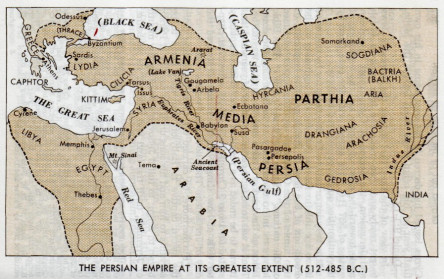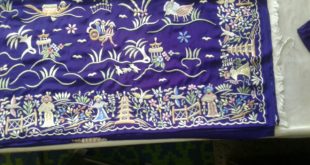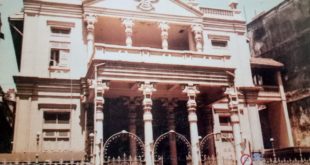Zoroastrian genealogy: From Ancient Iran to India
————- By Conservation Architect Sanaeya Vandrewala.
In earlier times, both Iranians and Indians were part of the same tribe identified as the Proto-Indo-Iranians belonging to the Indo-European family. With the roots in the Caucasoid, that is the Indo-European family, it then branches out to form the Nordics, Alpines and the Mediterranean. The Alpines bifurcate into Armenoids and the Iranoids that is the Proto Indo-Iranian family roughly around the 4th Millennium BC. They wandered and settled on the southern Russian Steppes. After the passing of the 3rd Millennium BC the group again divides into Iranians settled on the Iranian plateau circa 1200 BC and the other forms Vedic Aryans which then merge into the Indus valley civilization circa 1500 BC.
The ancient name of the country of the Iranian people has appeared in Avesta, is airya, airyana. This Avestan term appears as ērān, irān in the later speech. Hence, this term Iran was generally applied to the various land and countries to which the Iranian people migrated in their long history. In Latin, the name for the entire empire was Persia and was thus referred to in all western literature. Persia stems from Pars a province in ancient Iran. However, since ancient times the endonym for the empire has always been Iran. In 1935, during the modern history of the country, name Iran was internationally accepted and has been used ever since. In this text, Iran is addressed to mean ancient Iran, as in the pre-Arab conquest of 652 AD.
Pre-Achaemenian Iran
This period in the Indo-European family began in the middle of the 2nd millennium BC forming a national identity. Prior to this different ethnic groups had occupied the region namely the Elamites and Sumerians in Mesopotamia to its west having a strong influence in culture and religion of the region.
Immigration of the Medes and the Persians
Small groups of nomadic, horse-riding peoples speaking Indo-European languages began moving into the Iranian cultural area from Central Asia near the end of the 2nd millennium BC. Three major groups are identifiable the Scythians, the Medes and the Persians. The Scythians settled in the northern region of the Zagros Mountains and led a semi-nomadic life. The Medes and the Persians settled on the eastern side of the Zagros Mountains. During the 7th century BC, the Persians were led by Hakamanish (Achaemenes, in Greek), ancestor of the Achaemenian dynasty. His descendant, Cyrus II laid the foundations of the most extensive empire in the ancient world by combining Median and Persian forces.
The Achaemenian Dynasty, 550-330 BC
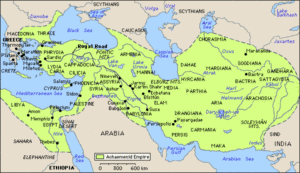
By 546 BC Cyrus had defeated Croesus, the Lydian king of legendary wealth and had secured control of the Aegean coast of Asia Minor, Armenia, and the Greek colonies along the Levant. Moving east, Cyrus took Parthia, Chorasmis, and Bactria. He besieged and captured Babylon in 539 BC and released the Jews who had been held captive there and favoured the rebuilding of the temple of Jerusalem, thus earning his immortalization in the Book of Isaiah.

His successors were less successful. Cambyses II conquered Egypt but was defeated in a revolt led by a priest, Gaumata, who usurped the throne in 522 BC but was later overthrown by a member of a lateral branch of the Achaemenian family, Darius I (also known as Darayarahush or Darius the Great). The limits of the empire were restricted to Asia Minor due to the defeat of the armies led by Darius to the Greeks at the Battle of Marathon in 490 BC to control the rebellious Greek mainland forces under his patronage.


The Achaemenians thereafter consolidated areas firmly under their control. It was under the leadership of Cyrus and Darius, who used efficient administrative planning and a humanitarian approach, established the greatness of the Achaemenians and established their strong hold and expanded to form one of the largest empires in the ancient world. Trading was well established and was widespread and under the Achaemenian rule, this was supported by well-organized infrastructure which in turn assisted the trades growth further. Other accomplishments of Darius’ reign included codification of the data, a universal legal system upon which much of later Iranian law would be based, and construction of a new state capital at Persepolis, where yearly tribute at the festival of spring equinox was celebrated with much pomp and splendour. Persepolis, in its art and architecture, celebrates the king and the office of the monarch and reflected Darius’s perception of himself as the leader of conglomerates of people to whom he had given a new and single identity. Achaemenian art and architecture found in Persepolis is at once distinctive and also highly eclectic. The iconography at Persepolis symbolizes the great artistic style of the Achaemenian art and architecture.

The Seleucids, 331-247 BC
Alexander the Great had envisioned a new global empire derived out of the fusion of Greek and Iranian cultures.

This he began achieving by the systematic accelerated the dissolution of the Achaemenian Empire. He was first accepted as leader by the fractious Greeks in 336 BC and by 334 BC had advanced to Asia Minor. In quick succession, he took Egypt, Babylonia, and then, over the course of two years, obtained the core of the Achaemenian Empire, Susa, Ecbatana, and Persepolis, the last of which he burned.
In 323 BC Alexander was struck with fever and died in Babylon, leaving no heir. His empire was divided among four of his generals. Seleucus, one of Alexander’s generals, who became ruler of Babylon in 312 BC, gradually re-conquered most of Iran. Under the command of Antiochus I, son of Seleucus’, Greeks occupies regions within Iran and brought Hellenistic influences in art, architecture and urban planning.
The Parthian Dynasty, 248 BC-224 AD
The Seleucids were constantly challenged from outside the empire by both Rome and Ptolemy from Egypt however the threat from within was the most damaging. In 247 BC the Parthian dynasty was established by Arsaces from the province of Fars who challenged the Seleucid governor. During the second century, the Parthians were able to extend their rule to Bactria, Babylonia, Susiana, and Media, while under Mithradates II (123-87 BC) Parthian conquests stretched from India to Armenia. After the victories of Mithradates II, the Parthians began to claim descent from both the Greeks and the Achaemenians. They spoke a language similar to that of the Achaemenians, used the Pahlavi script, and established an administrative system based on Achaemenian precedents.


In 224 AD Ardeshir son of priest Papak, the Parthian governor in the province of Pars overthrew the last Parthian king and established the Sassanian dynasty. The Sassanian Dynasty lasted 400 years till the Arab conquest.
The Sassanian Dynasty, 224-652 AD
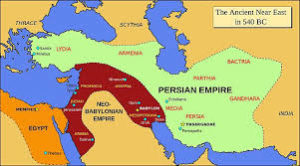

The Sassanian dynasty was a unique period in the history of religion. Ardeshir Papakan (224-229 BC) as stated earlier was the founder of the dynasty. He started the unification of religion from diverse forms and practices into one monolithic structure. It was during this period that the rituals and practices went underwent a controlled change. The faith became suddenly alive because the rituals and ceremonies became understandable in the language of the day. Under Sassanian dynasty, the entire Avestan scriptures and Pahlavi commentaries were written in the new phonetic alphabet. During this period Zoroastrianism was strengthened, unified and enriched by an ever-growing body of dedicated and disciplined priests in service. Yazdegard III (632-651 AD) ascended the throne when the empire was going through a phase of the internal conflict. The Arab invasion (633-641 AD) caused the downfall of the Sassanian Empire thus bringing an end to the Zoroastrian control in Iran.



Following the invasion of Iran by Arabs, Piruz, son of Yazdegard III, escaped along with a few Persian nobles and took refuge in the Chinese imperial court. Both Piruz and his son Narseh (Chinese neh-shie) were given prominent positions in the Chinese court. The Chinese also assisted to restore a Sassanian to the throne on at least in two occasions in 670, but in vain. Narseh later reached the position of the commander of the Chinese Imperial guards and his descendants lived in China as respected princes.
Along with Mumbai, as mentioned in my previous article Sassanid Archaeological landscape of Fars region was also inscribed as a UNESCO World Heritage Site last month. These various archaeological sites situated in different geographical locations in the Shapur I includes Firuzabad, Bishapur, and Sarvestan. Dating in between 224 to 658 CE these fortified structures, palaces, and cityscape belong to the earliest and latest times of the Sassanian Empire. Also included in this list is the capital built by the founder of the dynasty, Ardeshir Papakan, as well as a city and architectural structures of his successor, Shapur I.

As the UNESCO website observes, while the Achamenian and Parthian cultures and the art of Rome had an obvious influence on the entire archaeological site (it has made optimal use of natural landscapes); the site in its turn, significantly influenced Islamic architecture and artistic styles.
Bibliography and Citation:
- Boyce, M (1979) Zoroastrians: Their religious beliefs and practices. London: Routledge & Kegan Paul.
- Circle of Ancient Iran studies: http://www.cais-soas.com
- Karanjia, R. Ed (1999) Outlines of Parsi history, Zoroastrian religion and ancient Iranian art. Mumbai: Society for the promotion of Zoroastrian religious knowledge & education.
- Mistree, K (1982) Zoroastrianism: An ethnic perspective. Bombay: Khojeste P. Mistree
- Rivetna, R (Ed) (2002) The legacy of Zarathushtra: An introduction to religion, history, and culture of the Zoroastrians. Illinois: Federation of Zoroastrian Association of North America
- UNESCO world heritage list https://whc.unesco.org/en/list/1568
- Image courtesy: UNESCO World Heritage Centre Gallery, Iran chamber society, Alamy.
